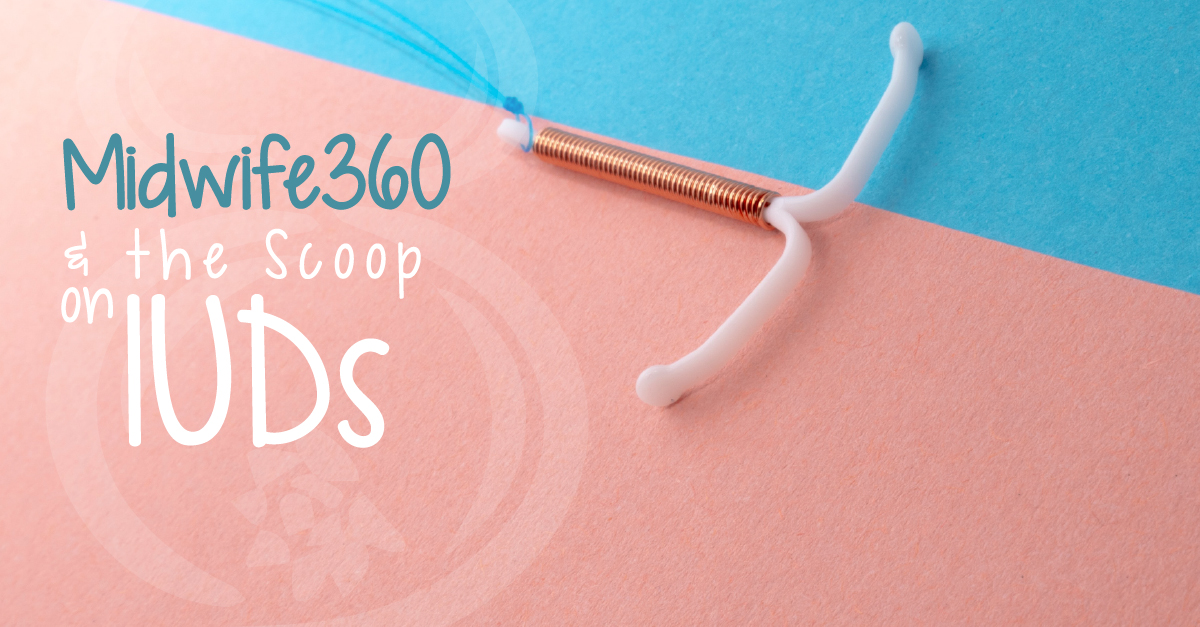Many of my clients ask about birth control options that do not have hormones. There are a few, mostly they are the barrier methods like condoms (male and female), diaphragms, and cervical caps, or surgery. But the copper IUD is the only one that is long term and reversible and does not have any hormones. Since the copper IUD is not the only long term, reversible contraceptive, I wanted to break it down here for you.
What is an IUD?
IUD stands for IntraUterine Device. There are 2 types of IUDs, those with hormones and those without. Both of them are T-shaped plastic rods that are about 1.3 inches long with a string attached to the leg. The ones with hormones contain progesterone impregnated plastic, while those without have some copper wrapped around the arms and/or leg.
Progesterone IUDs
The hormonal IUDs are called Mirena, Liletta, Kyleena, and Skyla. They are approved to last from 3 to 5 years and the Mirena and Liletta can be effective up to 7 years. The Skyla (3 year device) is a bit smaller than the others and is marketed towards young women who havenʼt had babies yet. The hormones effectively thin the lining of the uterus causing the wearer to have a super light or no period. Women usually still feel that they are cycling, as they can still get bloating or other pre-menstrual symptoms, but without the bleeding. Sometimes the IUD can cause an increase in period bleeding, but this is usually short-lived and will slow down or stop completely within a few months. This can make it more difficult to get pregnant once the IUD is removed as it can be 6 months or longer before the period returns to normal.
Copper IUDs
The copper IUD that is approved for use in the US is called Paragard. There is another brand that is used in other parts of the world called Nova-T that is the exact same thing as the Paragard – a plastic T-shaped device with 380mm2 surface area of exposed copper. The Paragard is approved for 10 years and effective for at least 12. The Nova-T package insert says itʼs approved for 5 years.
Pros and cons
The benefit of using an IUD is that it is placed once and then you donʼt have to think about it. You donʼt have to remember to take a daily pill, switch out your patch every week, do a monthly vaginal ring swap, or get a shot every 3 months. They are very effective, partly for this very reason – everyone is a perfect user. They are considered 99% effective in preventing pregnancy.
However, if you do get pregnant, especially with a hormonal IUD, you have a greater chance of having an ectopic pregnancy (when the fertilized egg doesnʼt make it past the tube into the uterus). As mentioned above, the hormonal IUDs can lighten or stop the period which is beneficial for those with super heavy cycles or super painful cramping – such as with endometriosis (a condition where the uterine lining or endometrium grows in places outside the uterus – when she has her period these places also bleed causing extreme cramping).
Another con with the hormonal IUDs is the tendency for those with them to be unable to lose weight or gain unwanted pounds over time.
An advantage of the copper IUDs is that one gets very effective birth control without using hormones. This means that it doesnʼt affect your cycle or your ability to get pregnant once it is removed. The only other birth control that doesnʼt use hormones are the barrier devices (make and female condoms, diaphragms and cervical caps). However if one has a copper allergy, it can cause multiple systemic symptoms and even affect the efficiency of the immune system.
Placement
When you go to have your IUD placed, you should be on your period. This helps reduce the risk of infection as you have a flow that will carry any unwanted accidentally introduced bacteria out of the uterus. It also means that your cervix is softer and more open. You will be counseled regarding the risks of perforation and infection – which are the more common risks of placement. Your provider may also mention that expulsion of the device is also possible. Perforation would be pushing the inserter through the wall of the uterus and placing the IUD outside of the uterus.
The provider should use sterile technique and clean inside your vaginal vault with betadine or hibicleanse prior to inserting the IUD. Some providers will numb the cervix with lidocaine, which makes the insertion much less uncomfortable. The uterus should be at least 6 cm deep, which is noted during the insertion as the inserter has cm markings on it. Once the IUD is properly placed the provider will make sure to cauterize any active bleeding with silver nitrate sticks.
Then you should be given a prescription to get an ultrasound to check placement and cautioned to refrain from intercourse for one week. Having an ultrasound assures that the IUD was placed properly in case there are questions about that in the future. It also reassures everyone that there was no perforation at the time of insertion. You can feel the strings which should be about 2-3 cm long hanging out of your cervix. These strings will be used to remove the IUD when you are ready to have it taken out.
Removal
Getting the IUD removed is typically much easier than placing it. Sometimes the strings are no longer visible in which case an instrument is used to capture them and draw them out where they can be grasped with an instrument and the IUD removed with one swift tug. It does not hurt and I donʼt think Iʼve ever removed one where the client didnʼt say “Thatʼs it? Youʼre done?” It is important to wait a couple of cycles before trying to conceive as the risk of miscarriage is higher in the first 2 cycles of stopping any type of birth control.
Support your local Nurse Midwife!
You can see an OB/GYN or CNM to get counseled regarding which birth control option is right for you, or if an IUD is a good option for its effectiveness in treating heavy menstrual bleeding and painful periods even if you donʼt need birth control. As always – do your research, know your body, ask questions, expect respect – make sure you are satisfied with the results!





